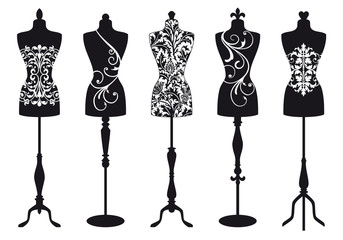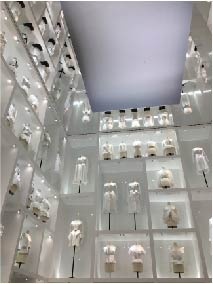As readers of this blog know, I take great pride in sharing and exploring new ideas and concepts in the  areas of Business Acumen, Business Leadership, and Strategic Business Selling. I enjoy writing about recent experiences I’ve had in the business world working with our clients and most of the time these blogs are about something I know very well or feel very comfortable discussing. Today’s blog breaks new ground for me because I am going write about something I have absolutely no idea about; Haute Couture (high fashion dress making).
areas of Business Acumen, Business Leadership, and Strategic Business Selling. I enjoy writing about recent experiences I’ve had in the business world working with our clients and most of the time these blogs are about something I know very well or feel very comfortable discussing. Today’s blog breaks new ground for me because I am going write about something I have absolutely no idea about; Haute Couture (high fashion dress making).
What’s fascinating about not knowing anything about the industry, business models, customers, competitors, or suppliers is that I could open my mind and apply foundational skills of Business Acumen to learn and figure it all out fairly quickly. And at the end of the day, isn’t that the objective of having Business Acumen skills? It’s like I just shared with a client in the pharmaceutical industry when discussing the design and roll-out of our Business Acumen for Drug development engagement, “We want brilliant people who know nothing about the language of business to learn about the language of business so they can make the best decisions to achieve your business goals and objectives.”
This past weekend, I had the opportunity of staying in Paris after delivering one of our Business  Leadership programs for a client based in France. My wife who met me in Paris for her birthday asked me if I’d go to the Dior exhibit at The Musée des Arts Décoratifs. I was reluctant at first, but since it was a cold and rainy Sunday, I agreed. And I am very glad that I did as here are 5 Business Acumen lessons I gained from the experience:
Leadership programs for a client based in France. My wife who met me in Paris for her birthday asked me if I’d go to the Dior exhibit at The Musée des Arts Décoratifs. I was reluctant at first, but since it was a cold and rainy Sunday, I agreed. And I am very glad that I did as here are 5 Business Acumen lessons I gained from the experience:
Product Leadership Can Last Decades if Executed Well
The Dior house is celebrating its 70th anniversary and they are still going strong. The organization founded by designer and artist Christian Dior in 1947 has established one of the most powerful brands on the planet and it has been backed up by their pure Product Leadership strategy without wavering for seven decades. The brand and value proposition is supported by meticulous attention to detail and flawless execution.
The House of Christian Dior has a Point of View
Dior’s designs in the late 1940’s and early 1950’s were disruptive. He changed the game of fashion by creating a point of view that offered new elegance and presented a unique expression in new forms, materials, and adornments such as bows, buttons, and other unique differentiations. That point of view has transcended the fashion for seven decades.
Utilization of Rapid Prototype Development (RPD)
Dior and his team of artists leveraged he concept of rapid prototype development moving from paper designs to mini-designs quickly and efficiently. Instead of creating an entire real-time scaled dress, they created mini versions in a fraction of the time and at a fraction of the cost. Customers, fashion experts, and the media could see it, touch it, feel it and gain feedback which could then be used to quickly modify the next release. Very similar to how software companies work today.
A Culture Founded Around the Ability to Change
The high fashion industry is crazy! Every season there are new designs, new trends, and new changes. Dior created a culture that could adapt quickly and embraced change in ways that provided opportunities and the ability to drive the direction instead of reacting to it and other competitors.
The Brand Doesn’t Have to be One Person
Think about businesses that are based on someone’s name; McKinsey, Bain, Disney, Walmart, McKesson, and Ford are just a few of the big companies that have leveraged the name of their founder for decades. Even though their original founders are long gone, they are still very much built today in the image of the person who started the company. Dior is different. Dior has essentially had several diverse chief design officers who have been responsible for maintaining the brand and point of view, but with the ability to evolve and execute flawlessly with a new and fresh perspective. For example, the now-famous Yves Saint Laurent followed Christian Dior after his untimely death and was about to evolve the brand in his image very effectively but without giving up the Dior point of view.
In summary, it was a fascinating afternoon and one that taught me several ways of sharing Business Acumen skills through a case study that is 70 years old. The most important things to remember are stick with your strategy, have a point of view, pay attention to details, fail-fast-forward through rapid prototype development, create a culture that is adaptable to change, and the strategy doesn’t have to be based on the thinking of just one person.




